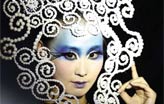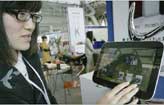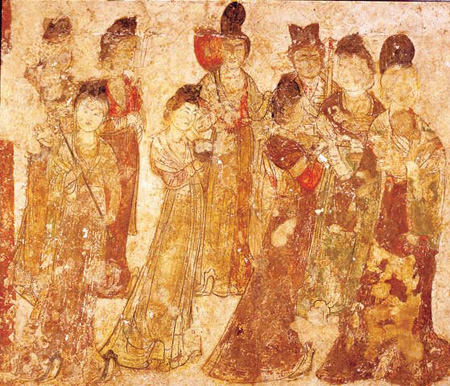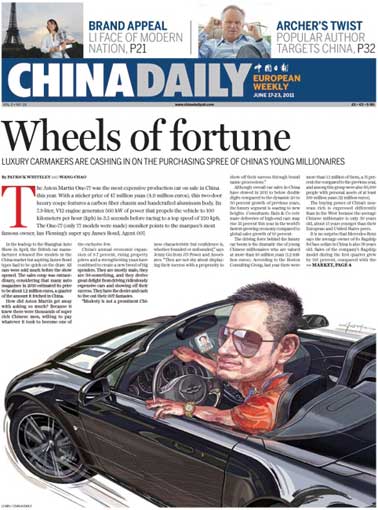Heritage
The writing is on the wall
Updated: 2011-06-17 07:37
By Zhu Linyong (China Daily)
|
Maids-in-waiting is displayed at the Shaanxi History Museum. Provided to China Daily |
The first exhibition of Tang Dynasty (AD 618-907) frescos will open at Shaanxi History Museum on June 20.
It will put 97 of the best-preserved ancient murals on permanent display.
Tang murals have been discovered in about 100 ancient tombs in the area around Shaanxi's provincial capital Xi'an, known as Chang'an during Tang rule. But few are in good condition.
About 400 murals, in various shapes and sizes, have been unearthed from 26 ancient tombs and relocated for better protection since 1952.
A handful of the frescos were exhibited abroad in the 1990s. One was shown at the 2010 Shanghai Expo. Most of the displays are available for public viewing for the first time, the museum's dean Cheng Jianzheng says.
"This is the first time such a comprehensive show of Tang Dynasty murals has been staged anywhere in the world," Cheng says.
"It will definitely become a new attraction in Shaanxi, along with the famous Terracotta Warriors."
Mural paintings have a long history in dynastic China, senior researcher and the museum's former dean Zhou Tianyou says.
The earliest tomb frescos are from the Western Zhou period (11th century-771 BC). The art form advanced remarkably in the Han Dynasty (206 BC-AD 220).
It reached its first peak in terms of style, technique and subject matter in the Tang Dynasty, when China enjoyed national unity, economic prosperity, cultural advancement and increased exposure to foreign cultures, Zhou says.
Murals were commonplace in Tang imperial palaces, high-ranking officials' residences, and Buddhist and Taoist temples and caves.
Because of the ancient belief in the afterlife, tombs were constructed in the likeness of the world of the living and stocked with useful items. The frescos recorded scenes from the deceased's life, Zhou explains.
"The mural paintings on show reveal, in various ways, the social and private lives of people in the Tang Dynasty," he says.
Many murals portray such subjects as mythical creatures - especially dragons - and constellations. Many also show processions of honor guards, maidservants, architects and foreign diplomats, as well as scenes of feasts, hunts and halberds.
The best known among the exhibited murals depict games of polo, a sport popular among the Tang aristocracy.
These frescos, excavated from Prince Zhanghuai's mausoleum, are the best among those from Shaanxi's Tang tombs, researcher Zhang Mingqia says.
Because few paper or silk paintings from the period have survived, "the murals found in these ancient tombs are invaluable tangible artifacts for people to glimpse Chinese history's most glorious era, one during which overall prosperity was achieved", researcher Zhou Tianyou says.
The exhibition will run at the recently completed Hall of the Tang Dynasty Mural Paintings in the museum's basement.
The hall covers a floor space of about 3,400 square meters and is equipped with advanced lighting, exhibition and surveillance facilities. It was constructed between 2005 and 2010 with a loan of about 14 million yuan ($2.16 million) from the Italian government and an additional central government subsidy of 18 million yuan.
The exhibits are kept in specially made showcases to ensure the temperature remains between 18 C and 20 C, and the humidity ratio stays between 55 percent and 60 percent.
Changes in air quality, temperature and humidity will be closely monitored to prevent damage, chief of the museum's equipment division Li Ning says.
Visitors must make reservations and pay 300 yuan to see the mural paintings.
Audio guides and volunteer lecturers will be available in the hall.
Various publications and souvenirs about the mural paintings have been created to cater to the different needs of visitors from around the world, museum dean Cheng Jianzheng says.
The museum made headlines early last month, when five Tang Dynasty murals that had been illegally sold overseas six years ago were returned to Xi'an.
"(But) the five returned murals will not be on show in the near future, because experts will take years to study and repair them," cultural relics conservation chief Han Jianwu says.
Lu Hongyan contributed to the story.
China Daily
E-paper

Pret-a-design
China is taking bigger strides to become a force in fashion.
Lasting Spirit
Running with the Beijingers
A twist in the tale
Specials

Mom’s the word
Italian expat struggles with learning English and experiences the joys of motherhood again.

Lenovo's challenge
Computer maker takes on iconic brand apple with range of stylish, popular products

Big win
After winning her first major title, Chinese tennis star could be marketing ace for foreign brands

